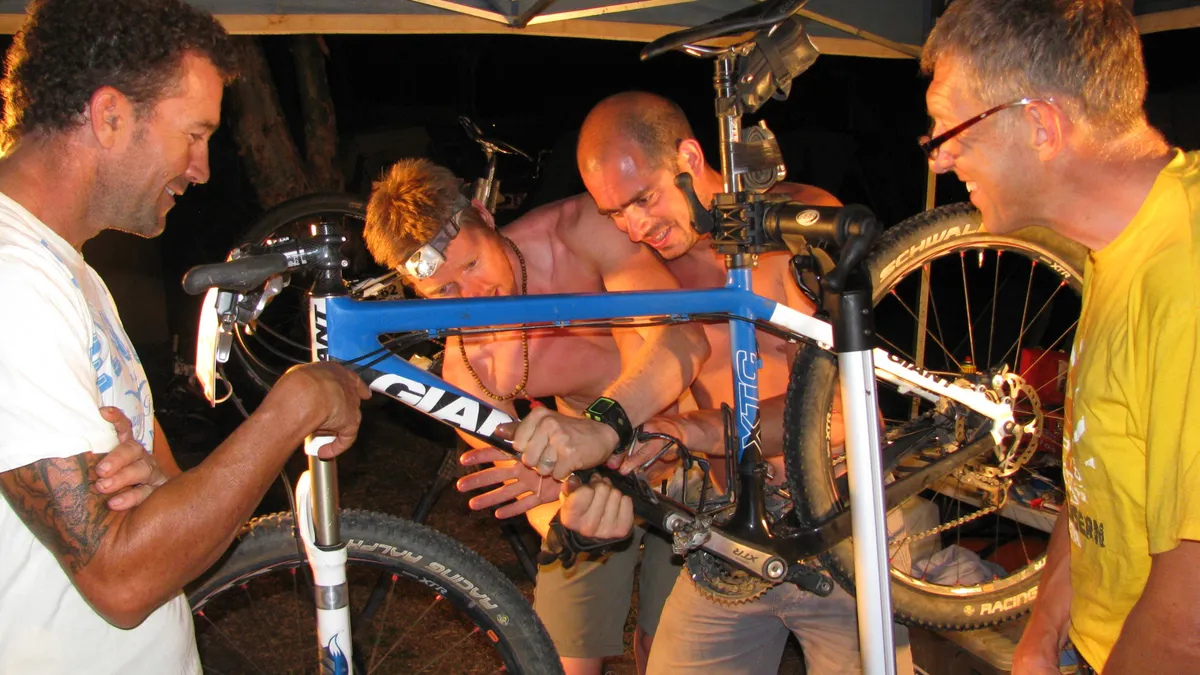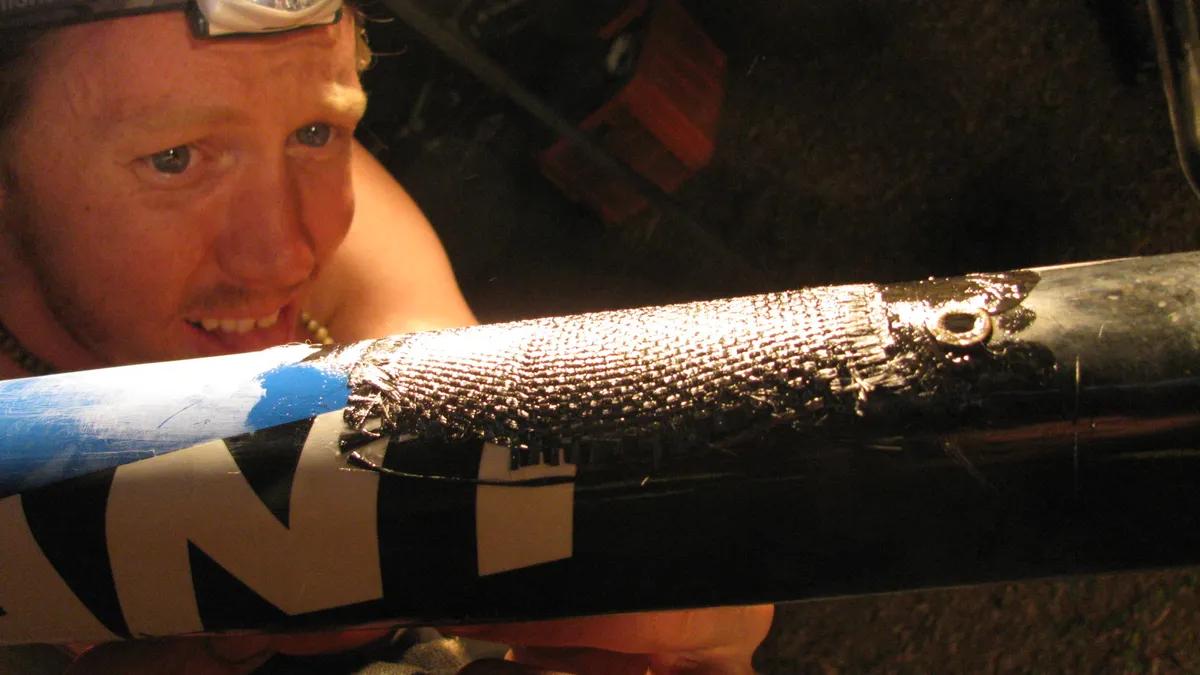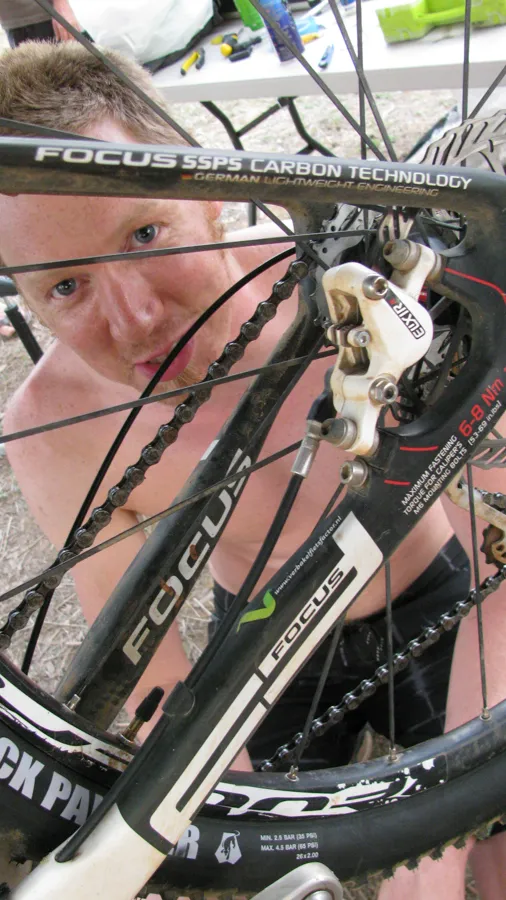Multi-day mountain bike racing can be an incredibly rewarding and enjoyable adventure, but if you or your bike aren’t up to it, it’s going to be a miserable experience.
In this three-part series, we speak with the riders, mechanics and organisers of the iconic Crocodile Trophy, an iconic mountain bike stage race held annually in far North Queensland, to gather some insight into what works – and what doesn’t – when it comes to bike setup, nutrition and general preparation.
While these articles focus on some of the world’s hardest multi-day racing conditions, every rider can benefit from the information provided in these articles.
For 2014, the Crocodile Trophy gains UCI S1 classification and moves to a truer mountain biker’s course, with plenty of singletrack. However, past courses have been proving grounds for equipment and riders – the general feeling is that what survives the Crocodile Trophy can survive anything (two-time winner Adam Hansen included). Let’s start by talking tech.
Bike and equipment choice
It’s easy to get carried away with the adventure side of the race, and forget that the gear is what gets you to the finish line.
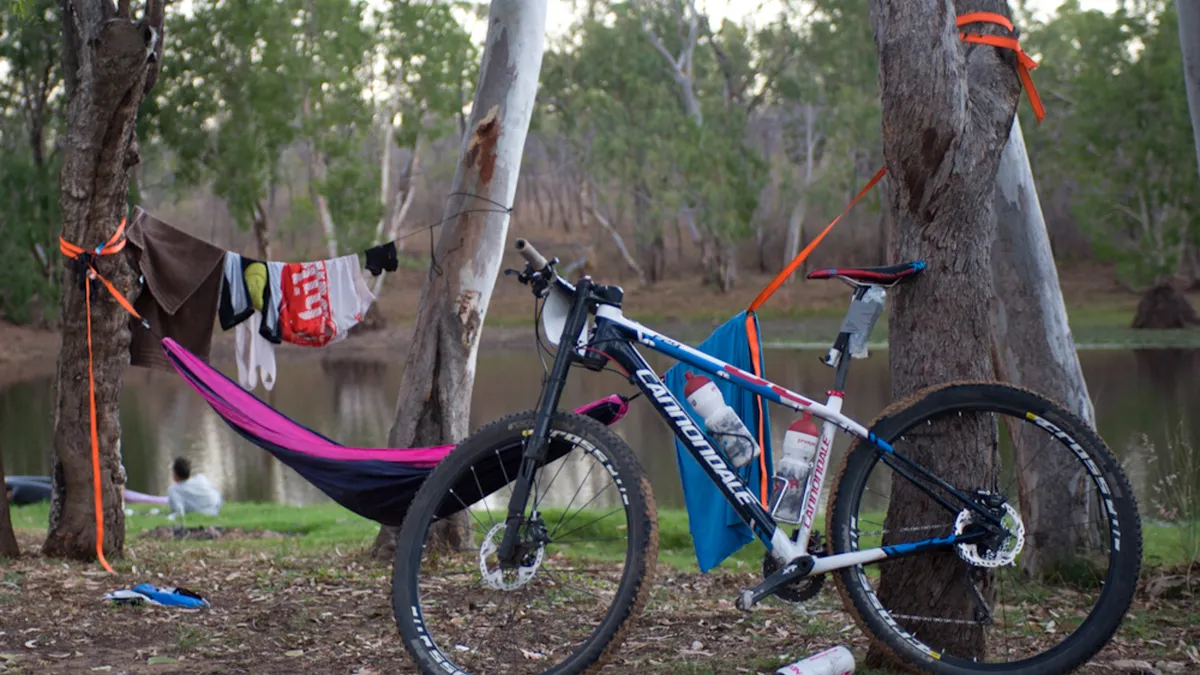
Chances are, your bike condition is only going to get worst as the race progresses. Don't start the race with anything less than perfect
BikeRadar caught up with Canadian Cory Wallace, one of the big names in endurance mountain biking. Wallace began: “When exhaustion sets in, bike maintenance is the last of your worries. Your bike isn’t going to improve as the race goes on, so it just needs to be perfect at the start.”
These long events will nearly always have professional mechanics on hand, but they have everyone’s bikes to work on, and won’t have time to rebuild someone’s poorly prepared ride to perfection. The mechanics at these events will clean the bikes, check the brakes and bolts and perform minor adjustments – and, unless you’ve asked them to address a particular problem, they then move onto the next ride. One tip is to Loctite most of your bike’s bolts, it’s one less thing for you and the mechanics to worry about after each day of body-churning terrain.
As a helping-organiser of the Croc Trophy and frequent competitor, Martin Wisata wisely told us not to skimp when going into big races. “Show up with fresh gear, don’t bring your old stuff thinking this will be its last race," he said. "You’re spending all this money on being at the event, just put a little more into making sure your bike is the best it can be”.
However, the truth is that just because something has always worked for you in training and short races, doesn’t guarantee it’s up to the task of seven or nine days of straight racing. This was emphasised when we spoke with Garrett Sherman, a mechanic of the Croc Trophy and ultra-endurance rider himself.
“Back in 2010, we saw at least four carbon frames crack under the pressure. Additionally, every Euro rider who showed up with lightweight carbon wheels had issues – these races aren’t the place for the lightest stuff,” Sherman said.
“But those were the old days and technology and materials are so far ahead of that, assuming you don’t push the absolute limits of weight, today you can run some reasonably lightweight carbon gear without too much risk.”
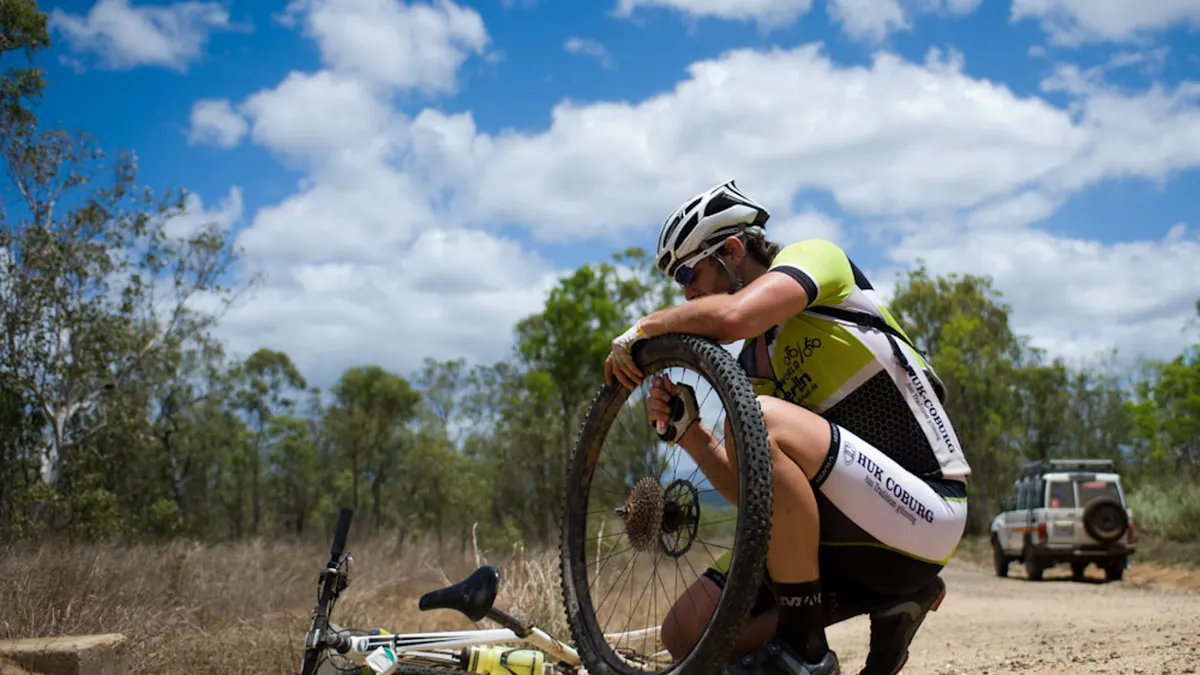
Tyre choice is one of the most important decisions leading into a race like this. Whatever you decide on, always bring at least a spare pair
Tyre choice can make or break your race too. "Don’t show up to these races with super lightweight tyres," said Wallace. "I made that mistake myself at the Croc before. I now use tubeless-ready Maxxis Ikons and have no issues, especially if you use plenty of fresh sealant. Tyre choice is crucial – lightweight tyres may seem attractive for riding the hills, but if you’re stopping because of a flat and losing your riding pack, that’s a far larger disadvantage.”
Jason English – a five-time 24 hour solo world champion, who was taken out of the 2012 edition of the Crocodile Trophy early by an incident with a car – said: “The races go over some open dirt roads that suffer badly from corrugations. Baggy tyres can really help here – I’d even consider going as wide a 2.4in width in some cases.”
A common debate in these races is the choice between a hardtail or dual suspension. The decision is often made based on the type of course, with the harsher, more technical terrain lending itself to dual suspension.
English said: “For me, the big equipment decision was between a hardtail or dual suspension. I settled on a 29er hardtail for its lightweight, greater water carrying capacity and absolute pedaling efficiency. To put that in perspective, I’d normally pick my dual suspension for 24-hour races.”
It seems some riders simply pick a hardtail for the ability to carry multiple water bottles and avoid wearing a hydration pack. The simpler and more reliable aspect of a hardtail is also a key factor for some.
As a dual suspension advocate, Wisata suggests: “If you’re trying to get the water off your back, consider something from the triathletes and run bottles off the seatpost. Bart Brentjens (former World and Olympic XC champion) is the only guy we’ve seen use a single bottle in the Croc – that guy is a camel!”
English added a little more on this topic: “Especially if you’re using a hardtail, you don’t want the weight of water on your back for these long distances. I’m about to head out on a 400km off-road training ride (he admits this will be his longest yet) and I’ve got frame-mounted bike bags to carry my stuff, along with a handlebar mounted water bottle holder to carry extra fluids. This handlebar bag is probably something I’d use in a race situation if I needed more than two bottles. At the Croc, I could of definitely used a third bottle”
Bike fit
It’s important to get your bike fit dialled well in advance of doing such an event. If you’re not comfortable on a bike under training, it’s certainly going to get worst when the racing starts.
Wallace stated: “Rule number one, don’t show up with unproven equipment – especially the saddle, you need to know your saddle works for you.”

Cory Wallace is incredibly strong, and doesn't give in to the 'long and low is best' routine
Known to have a rather upright position, Wallace continued: “Bike fit for these races isn’t the same as bike fit for a short course or single-day race, comfort is far more important. You don’t want to be hunched over for hours upon hours.”
While Cory Wallace runs a rather upright position, Jason English goes the other way. He opts for a far lower “slammed” position, one that he uses for 24-hour solo racing too.
The lesson here is to use what you’re used to and what works for you. However, if you run an overly long and low position and don’t regularly do core stability exercises, consider trialling a slightly more upright position with a riser bar or a shorter stem.
What to bring
Preparing for such an event is knowing the conditions and planning for the worst. The key to these races is to stock up on spares you might need, and even those you might not. If your bike has anything unique about it, then definitely bring a spare of that part. Brake pads, spokes, even drivetrains are good to take as spares. The service crews at these events are going to be well stocked in common parts, but won’t have every spare derailleur hanger and pivot hardware kit.
Wallace said: “The generally dry conditions of the Croc aren't too hard on wear components, but other stage races can be a nightmare on gear – where it’s totally possible to go through a set of brake pads or even a chain in a single stage. The Mongolia challenge is a tough one – if it’s wet, your parts will melt away.”
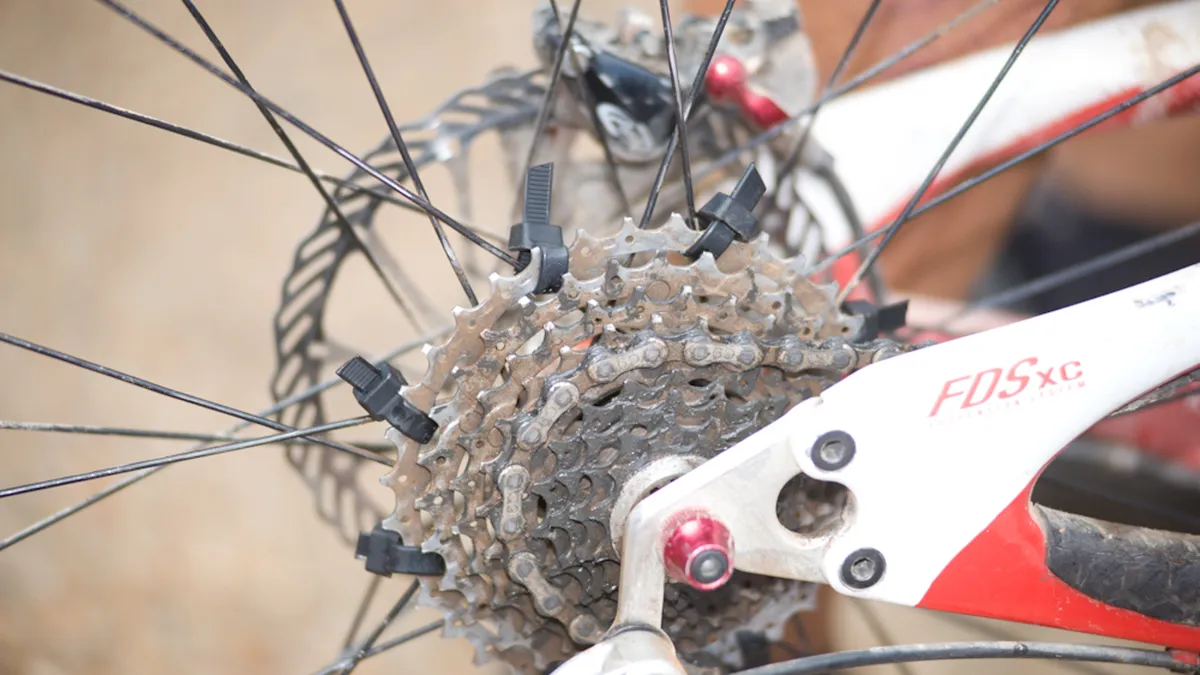
Never underestimate the power of zipties and duct tape: “One rider blew out his freehub on the last day, he managed to finish the race by ziptying his cassette to his spokes,” said Wisata.
Wisata mentioned that one of the favouite things he hears every year is: “I don’t need a spare spoke or a spare wheel, it’s never been an issue before.” He went on to say, “I nearly always get to do my ‘told you so’ dance”.
Most races like this one have rules that state you must finish on the same bike you started with, but it’s worth checking out individual event rules. While it’s not appropriate to bring a whole spare bike, a spare set of wheels with fresh tyres is a good idea in case you break a spoke, damage a rim or your freehub fails.
A key thing to take away is that the more reliable, common and proven your equipment is, the fewer spares you’ll need to bring your own of. Sherman joked: “We once had an Austrian guy who ran a Lefty fork. He came ready for battle with three forks – he ended up needing a fourth.”
In the next article, we’ll cover nutrition tips for such marathon events. BikeRadar recently visited Cairns and rode some of the trails that the 2014 Crocodile Trophy will go through, including the start at Smithfield, Atherton and then ending at Port Douglas nine days later.

